Trees
Wednesday, September 8th, 2021
Rewilding The Page – The Urban Forest Writing Map
Lush urban nature populates our towns and cities. Flourishing gardens, parks, city forests and woods, pockets of majestic trees, shrubs and foliage all create a green belt around us.
Spending time outside is good for our mind, body and spirit. These 12 creative writing prompts in the Rewilding The Page Writing Map invite you to continue deepening your connection with the green spaces on your doorstep.
Through writing, walking, drawing or meditation these writing activities help you connect with the colours, seasons, trees and plants in and around the spaces you inhabit.
Creative writing prompts by Jackee Holder and Shaun Levin
Illustrated by Gul E Raana
To purchase your copy for £7.99 + p&p send an email to info@jackeeholder.com
No Comments
Wednesday, May 12th, 2021
The Inner & Outer Nature Self Discovery Card Deck

The Inner & Outer Nature Self Discovery card deck launched in 2021 are a series of 49 nature and tree inspired journal and writing prompts.
Drawing on the metaphors and lessons abundant in nature, plants and trees the questions bring an organic invitation to your musings and inner reflections.
The writing prompts are a gentle way of reconnecting with nature both on the outside and the inside. Each question in the card deck draws from the rich metaphors and rhythms of nature.
By reconnecting with nature the questions are also an invitation to deepen your connection with your own inner nature.
To order send email to info@jackeeholder.com
Order your card deck for £21.99 plus p+p here
Pay via PayPal (no account necessary)
No Comments
Thursday, November 23rd, 2017
The 25th November is the start of National Tree week and in the first week of December we have Tree Dressing Day.
As many of the trees around us lose their leaves to the autumn and the winter, both these events offer a chance for communities to gather and celebrate the wonderful trees located in your neighbourhoods.
Most trees carry a story of some kind and significance, from knowing who decided to plant the tree in the first place to knowing more about who the person was and how they lived. Every tree contains the seed of some kind of story.
In my late thirties I was drawn to trees and was eager to learn more about their spiritual significance. I recently remember seeing some trees on a patch of land that was lovingly tended to by local people and hosting three trees, all adorned with colourful ribbons flowing from their branches. This memory then reminded me of a custom I grew up with in the Caribbean when come Christmas, they would adorn trees in the same way at Christmas time. In fact, that’s what used to happen to the huge Tamarind tree that sat on the corner of my mum’s home on the island of Barbados. And then of course, once one memory comes, so does another and I recall the beautiful yellow ribbon that had been tied around a tree at this years Notting Hill carnival that made my heart sing.
Tree Dressing day was founded by Common Ground in 1990 and I love what they had to say about the cultural and social history of Tree Dressing on their website, “Trees have long been celebrated for their spiritual significance. The simplicity of tying strips of cloth or yarn to a tree is universal and timeless. The old Celtic custom of tying cloth dipped in water from a holy well to a ‘clootie tree’ echoes the practice in Japan of decorating trees with strips of white paper, or tanzaku, bearing wishes and poems.
The twenty-first century trend of ‘yarn bombing’ in Europe and North America transforms the local landscape with bright fabrics and yarns, like the Buddhist tradition of tying ribbons around the trunk of the Bodhi tree in homage to Buddha, or the annual Hindu festival of Raksha Bandhan when coloured strings are tied onto trees and plants to call upon the power of nature to protect loved ones.” Go
here to read the full article
Earlier this year, I planted a rescue apple tree at the front of my house. It’s full bloom of leaves are now down to a few mustard brown leaves scattered towards the tip of the tree, fragile and flickering dangerously in the wind. In the summer, when I was lamenting the fact that my tree still hadn’t shown any sign of producing Apples, a gardener told me that my tree is a perfect tree to dress.
“To bear apples the tree has to send all if its energy from the roots to the fruit leaving very little energy to be distributed throughout the rest of the tree.”
So for now I can delight that these winter months will give my delicate tree time to rest and hibernate so it can replenish its stores.
The similarities in all of these tree customs and festivals remind us that as a human race we hold so much throughout the depths of our long cultural and social histories that are the same.
So as many trees lay bare we can remember the connection we hold together. We can dress our trees as a way of saying thank you and as a reminder of the diversity we both share through our different lineages and species that need to be celebrated. Our trees are a sign of hope, that even though winter may be here, be comforted in knowing that spring will eventually arrive. Until then we can give ourselves much needed permission to rest and celebrate our beingness. Let’s say thank you to our trees for all that they have given us throughout the year.
I’ve collated a list of the titles of my favourite Tree books that includes a few words about why the book makes the list.
Any book from the list would make a meaningful gift for the nature lovers in your life.
No Comments
Monday, January 2nd, 2017
There is a Weeping Willow tree across the road from where I live that grows with wild abandon. It is nestled in front of an old electricity hut and positioned in-between two rows of terraced houses tightly knitted together almost in an urban attempt to give this tree the space it needs.
Perhaps it’s the solitary nature of the tree that seems to not be directly connected to the land of any of the houses on either side that gives it it’s right to spread out into the surrounding air space spilling over abundantly onto the pavement and walkway.
Walking past the tree requires either stepping into the road and strongly increasing your chances of being hit by one of the many cars that race daily up and down this road or delicately pushing your way through the dangling rope like catkins of the willow branches hanging like curtains that need to be pushed apart so you can take your next step. It won’t be long before the tree’s hanging branches will hit the road and the bodies of the cars obscuring windscreens before I suspect something will be done about cutting it back, I hope not too drastically.
I first met the tree in springtime of this year. At the time the tree was resplendent in its blossoming of flowing wavy branches and long dangling catkins. In the summer it played magic with the sunlight sometimes becoming almost invisible until one of her swinging branches hit you in the face as you walked past.
The Weeping Willow Tree in the Springtime
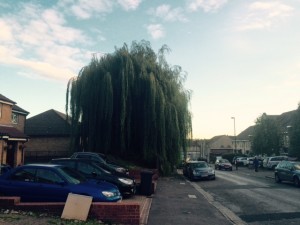
Then last week as I headed out for my early morning walk around the neighbourhood I looked up the street in the trees direction and realised almost overnight she had gone almost bald. The lime blushed green of the trees long dangling catkins had been thinned out and threadbare, washed out from the lack of green chlorophyll that makes leaves green.
The same Weeping Willow Tree Christmas 2016.
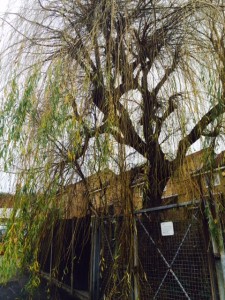
The trees appearance took me by surprise. I am sure the week before the tree was fully clothed. It appeared as if the disrobing had happened overnight as can the events in our own lives that sometimes derail and leave you feeling bare like the Willow looked.
It was a reminder that each of the seasons carries its own medicine. That the winter of the Willow tree even though it may appear at first glance to have deprived the tree of its full glory was also a time of rest and renewal a chance for the tree to take out to prepare for new growth that will arrive in the springtime.
This is true for life events and personal experiences that leave us devastated. We forget that this season of our lives can also be an opportunity to start over again, to in time when we have healed to plant new seeds and of the importance of making time to rest and renew our energies especially when going through difficult or turbulent times. It can be easy to forget that nature knows the science of the seasons much better than we do and that the cycle of the seasons is a mirror for the cycle of our own lives and the things we experience. In time if we trust enough and when we do the inner work rather than conceptualise what needs to be done we will grow new hopes and possibilities as we head towards the season of spring in our own cycle of renewal.
I do not write these words from a distance. I am as close to the Willow tree geographically as I am emotionally and psychologically. I too am rendered bare in many areas of my life right now as I rebuild the process of starting over. The space feels tender and vulnerable sure signs that there is a need to rest so cells can be renewed and spirits and energies replenished. “Our cells sometimes need to fall like leaves from the trees before they can regenerate and be renewed,” writes Madison Taylor in one of her weekly blog posts on the Daily Om website.
As I watch the Willow tree I am reminded of its resilience, of how in its stillness it will gather strength and take the lessons from this quiet period of its life into the next cycle confident that what will come will be a new period of fertility and growth.
I take comfort and courage from the Willow’s nakedness as I tenderly nurse my own dreams back into a new lease of life. To the naked eye the tree may appear dormant when in fact everything underground is moving even though it is not yet visible from the outside. New leaves are preparing to sprout and bud. By time the spring arrives the tree will burst into bloom in a space of time that seems sudden but which in fact took time.
Change can be like that. Often the change takes place within invisible externally before you see and experience the full effect of the change process on the outside.
Trees are both teachers to us about the delicacy and fragility of life and all that it brings. A tree becomes a tree from the possibility of one seed from a thousand taking root. Knowing this makes me think that each tree is literally a miracle and could we not say the same for us humans?
My reverence for the nature and spirit of trees has resulted in a newly published Writing With Fabulous Trees Writing Map created in collaboration with the genius Shaun Levin of Writing Maps http://www.jackeeholder.com/tree/writing-with-fabulous-trees-writing-map-for-parks-gardens-and-green-spaces/
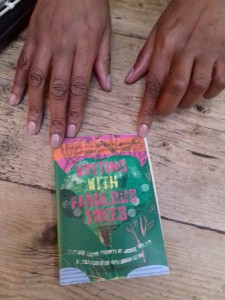 It’s an illustrated collection of 12 Tree inspired writing prompts that explores the wisdom and lessons we can learn from trees as well as how tree wisdoms can provide insight and reflection on our own lives. In a handy pocket sized map that folds out the prompts also encourages a more intimate connection with the trees in your local neighbourhood, parks and green spaces through engagement with the writing prompts.
It’s an illustrated collection of 12 Tree inspired writing prompts that explores the wisdom and lessons we can learn from trees as well as how tree wisdoms can provide insight and reflection on our own lives. In a handy pocket sized map that folds out the prompts also encourages a more intimate connection with the trees in your local neighbourhood, parks and green spaces through engagement with the writing prompts.
Get writing with the trees and see what trees teach you about life and living.
Click here to order a copy of the new Writing With Fabulous Trees Writing Map
http://www.writingmaps.com/collections/all-the-maps/products/tree-map
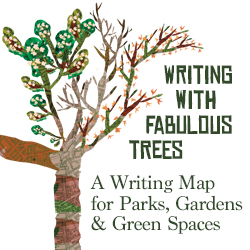
No Comments
Thursday, December 15th, 2016
We rely on trees for the paper we write on and for the oxygen in the air we breathe. We need trees probably more than we sometimes care to admit. Deepening your connections with trees can be calming and oddly reassuring. 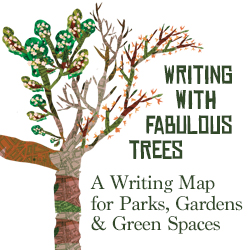 Trees have long inspired many poems, novels and short stories of writers in many ways. These creative writing prompts are devised to create a longer conversation about trees from your past and to stimulate you to indulge in a more reflective inquiry into how engaging and writing about trees can help you develop greater intimacy with yourself and your characters in sometimes surprising and unexpected ways. This writing map tucked into a pocket or a rucksack is the perfect companion on long walks in nature or whilst you are strolling through the city. You might be inspired to take a photo of a tree on your travels, slow down and experiment with drawing a tree to writing stories or personal narratives stimulated by the roots of your own family tree? The prompts and quotes generate learning and insight about yourself and where you come from as well as the opportunity to learn more about the host of benefits trees have to offer. Writing With Fabulous Trees will encourage you to be more observant about the trees in your neighbouring or surrounding parks and green spaces and even the trees in your street or in your own private garden will take on new and different meaning. Order Now £7.99 plus p&p
Trees have long inspired many poems, novels and short stories of writers in many ways. These creative writing prompts are devised to create a longer conversation about trees from your past and to stimulate you to indulge in a more reflective inquiry into how engaging and writing about trees can help you develop greater intimacy with yourself and your characters in sometimes surprising and unexpected ways. This writing map tucked into a pocket or a rucksack is the perfect companion on long walks in nature or whilst you are strolling through the city. You might be inspired to take a photo of a tree on your travels, slow down and experiment with drawing a tree to writing stories or personal narratives stimulated by the roots of your own family tree? The prompts and quotes generate learning and insight about yourself and where you come from as well as the opportunity to learn more about the host of benefits trees have to offer. Writing With Fabulous Trees will encourage you to be more observant about the trees in your neighbouring or surrounding parks and green spaces and even the trees in your street or in your own private garden will take on new and different meaning. Order Now £7.99 plus p&p
Text and writing prompts by Jackee Holder in collaboration with Shaun Levin and with illustrations by Flazia Felipe. The A3 map (297x420mm) folds into A6 (105x148mm, postcard size), and is printed in England. NOTE: Some content may not be appropriate for writers under 16
No Comments
Saturday, August 20th, 2016
“City life cuts you off from the seasons, but walking restores your awareness.“ – Joan Bakewell
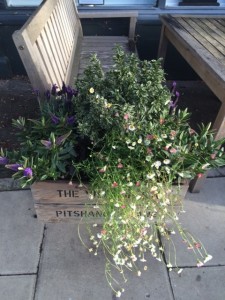
This weekend I am staying in Ealing on a city writing retreat hosted by the wonderful Clare Berry www.clarebarry.com It’s a perfect opportunity to unwind and spend chunks of time writing away from the distractions of life back at home.
I have fond memories of Ealing from childhood. In the sixties my Dad would drive my Mum, baby brother and me from South London in his bottle green Morris Minor car to the home of my godmother Aunty Eunice in Ealing.
At the time through my child’s eye their home was huge and even the pavements on the road they lived on were double the size of the slither of a road we lived on in Camberwell in London which may well have been one of the smallest streets in the whole of city. And to top off my idyllic memories the sun was always shining when we visited.
Now I am a half a century and more older the streets seem smaller in the Ealing suburb as do the houses but the energy of the place feels the same.
Sitting in the front reception room it is a while before I notice how quiet the area is compared to where I’ve lived for the last ten years. The moment reminds me that when we make time to get still the nature and vibration of a place speaks to us in many ways.
One way I get to know and really connect with the spirit of a place is by walking. Today as I head over the hill from the home I am staying in I am greeted with a wonderful view of the river Brent in the far distance. The river is a slim shimmering slit of silver from the naked eye but somehow its presence calms me knowing that water is nearby.
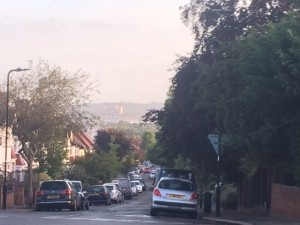
My host has drawn me a map. The wildness of a map hand drawn on paper rather than relying on Google maps heightens my sense of adventure. The night before I ask my host to point me in the direction of the nearby parks. Green spaces, what I call the lungs of a place always give me the heartbeat of the place and act as a natural compass to explore the area.
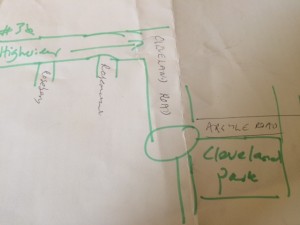
The roads I wander down are abundantly tree lined with assortments of red and orange geraniums in almost every other house or window box.
I walk for over ninety minutes and find myself winding down roads adorned with lovely cottages and front gardens showcasing huge plants like the cactus in the photograph below.
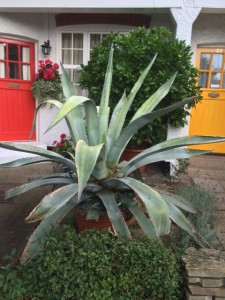
Walking accentuates the power of observation. It’s an ideal activity to sharpen and improve your writing skills because it allows you to really see in a way we don’t see and experience when travelling by car or transport.
Walking also contributes to the quality of your thinking. Both running and walking are incubators for the emergence of some of the best ever ideas and solutions for issues and dilemmas across my personal and professional life. What’s great is that it requires very little effort on my part.
The minutes flow by and I am lost on my meanderings. A good, long walk is always a great way for me to preparing to write. Well into my walk I catch sight of a notice board at the bottom of one of the long front gardens I am passing by. The kind you get in front of village churches.
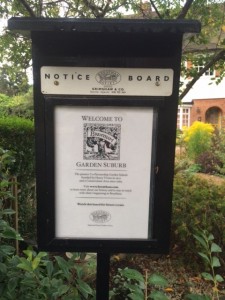
On reading I discover that I am in the heart of the Brentham conservation area. This is the reason why the gardens and plant life along these streets are so rich and vivid.

Here’s what it says on the website about the Brentham garden suburb:
Like a country village in the city, Brentham Garden Suburb is a little-known architectural gem in the midst of west London. The charming and distinctive estate of more than 600 homes and green spaces in north Ealing dates back to the early twentieth-century, when the Garden City movement was growing – as a reaction against the overcrowding and squalor of many homes in the city.
Brentham’s influence on domestic architecture and town planning is out of all proportion to its size. As you walk around, you find the tree-lined streets are curved and the houses arranged in irregular groups, creating a surprising view around every corner.Brentham also made history in another way. It was the first Garden Suburb built on ‘Co-partnership’ principles, so that residents could buy shares in their homes. www.brentham.com
My new discovery explains the reason behind the lawned alleyways I notice in-between many of the houses. My host informs me later that part of the original setting up of the co-operative included allocation of communal allotments and each house being gifted an apple tree.
I unexpectedly and almost immediately learn a lot about the area from a woman walking her dog who spots me taking a photo of the notice board and comes over to talk to me.
My walk without a mobile device except to take photos is energising. By the time I have arrived back at my host’s home I am lighter but also brimming over with words and I cannot wait to sit down and write this post.
I am curious. How well do you know the neighbourhood you live in by foot? I am about to leave the leafy area of East Dulwich in London where I have lived for ten years. The area I am moving to does not compare in many levels. However over the last few weeks I have been going for early morning walks around the neighbourhood I am moving to and discovering some surprise hidden gems about the area that is to become my new home. Walking each day is deepening an intimacy with my new neighbourhood and highlighting often in unexpected ways its hidden strengths and interesting nooks and crannies.
Research continues to add to the growing list of physical and psychological benefits gained from walking including adding seven years to your life, improving the quality of your sleep, acting as a natural anti-depressant and more recent research findings are highlighting the connections between how walking in nature contributes to lower levels of depression.
The self-reflective questions below can help connect you with the many benefits and gains of walking that could be yours.
- How might you make more time to explore on foot the area you live or work in?
- Get creative and curate a photo essay on your phone of the scenes that capture your interest from occasional walks. As the saying goes a picture paints a thousand words.
- To fully embody your walk connect with how you are feeling in your body as you walk? What are the physical signs telling you about your personal health and well-being?
- Carry out a before and after check in when walking to compare how you feel mentally and physically. Does your mind feel as busy? Or are you left feeling more spacious and clear.
Contemplate realistically where in your schedule can you plan in more time to walk without an agenda?
Hold in mind the question whatever your profession: What are the benefits and the gains from walking becoming more of a regular activity in your life?
No Comments
Wednesday, May 11th, 2016

I love it when a piece of writing catches my attention.
I am a fan and appreciative of long writing. I do not uphold this whole idea of bite size. Bite size has it’s place in the fast corridors of modern living but I prefer savouring and reading writing I am interested and passionate about. I am excited by sinking into a moving blog post, listening from start to finish to a podcast that is engaging and interesting. In amongst the onslaught of daily emails I do sit and regularly read and contemplate essays, writings and podcasts of all kinds. I am a curator of hundreds of quotes meticulously recorded on coloured index cards gathered from those moments of long listening or reading.
So when I came across Joan’s personal essay ‘Trees I Have Loved’ (thanks to originally listening to a great podcast interview with Joan Leof and Nathan Ohren over at Journal Talk) which led me to her marvellous book Matryoshka: Uncovering Your Many Selves Through Writing.
I knew I was in the presence of another kindred spirit. I have a Matryoshka doll which I often share with people on workshops and talks when demonstrating how important it is to uncover our masks and connect to the source of our true selves. So I was intrigued by the title of the book and the symbology and metaphor of the Matryoshka doll.
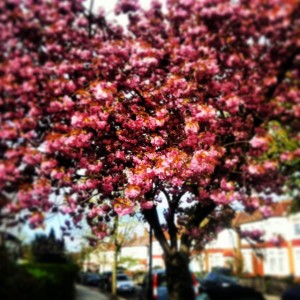
I ended up connecting with Joan online and shared with Joan the tree book I have been carrying around for a good few years that I have literally more or less written in my head but have not fully yet committed to the page. Joan’s essay on trees prompted me to get this project birthed. Joan has generously agreed for me to share her tree essay on the blog. You can read the essay Trees I Have Loved by following this link
Then, if this wets your appetite for more then head on over to her website to purchase a downloadable pdf copy of the book or Amazon where you can savour the collection of her personal essays on life.
Reading Matryoshka was one of those perfect reading moments when you are riveted to the spot and each essay you read strikes a chord for different reasons.
The essays are life affirming, challenging, stretching and inspiring and all very real and true to life. I noticed my whole body paying full attention as I read, nodding and shaking as I noted all the places where Joan’s stories deeply connected in some way with my own and still fully engaged when the experiences were different. I felt awakened as I journeyed with Joan through each of the essays. Each essay had me running to the page to write and capture my own story in words.
The reflective questions at the end of each chapter are thought provoking and stimulating and just working with one felt like it opened so much up. Joan’s writing felt hearty and whole, enveloped in having walked through both the dark and the light and coming out illuminated at the other end. Each essay felt like a flow of writing that had been mined from the heart and the soul.
See what you think. In the meantime enjoy Joan’s words and if you want more head to the links above and purchase a copy of Matryoshka (which has a beautiful front cover of a Russian Matryoshka doll) and enjoy the depth and wisdom of her essays as much as I did.
No Comments
Monday, February 15th, 2016
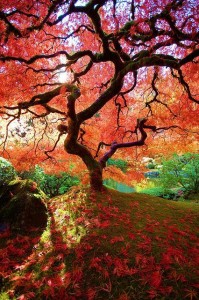
I have a scanner built into my mind that picks up on quotes about trees. I came across this tree quote recently in the memoir, Devotion by Dani Shapiro. Shapiro is currently one of my favourite writers. I am really enjoying reading her memoir. Despite the differences in our cultural backgrounds and faiths, she’s Jewish and I’m African Caribbean and raised Christian, we share so much in common.
I really enjoyed how she describes the trees in her meadow and how she brings the whole scene to life on the page. Here’s what she had to say:
“I have become intimate with a stand of trees in our front meadow. Grouped together near a crumbling walk, they are old and stately. On a sturdy branch of a maple extending out toward the driveway, Jacob’s rope swing hangs, swaying in the slightest breeze.”
She then goes onto write later in the piece as she completes her yoga practice, “All the while, I keep my eyes on the trees. My fixed gaze softens. The stone wall, the sky, the sweep of meadow, go slightly out of focus. This is how I most vividly see the seasons change: in winter the branches are stark, like charcoal slashes against the gray-white sky; in spring, the reddish cast before the buds appear; in fall, the distracting riot of colour; in summer; the lush, verdant thicket. No matter what the season, the trees are bending. They are indifferent to the people who come and go. They were here long before we arrived with our SUV’s, our bicycles and rope swings. Their branches are gnarled, knotted, twisted, but still reaching out.”
Here’s a writing assignment for you.
Describe a tree or group of trees in your locality.
Write about what the trees represent and any relationship you may have or wish to have with the trees. This doesn’t need to be a hefty piece. A few lines or combination of words will suffice. Build on the piece over the next week. Elaborate on colours, textures and shapes as ideas come to you.
Bring your tree or trees into glorious life on the page.
Devotion: a memoir by Dani Shapiro click here for more details:
No Comments
Tuesday, December 1st, 2015

Over the years I’ve masked my preference of introversion and learnt to masquerade as an extrovert in my career and in social settings. People who know me well know I prefer staying in and curling up with a good book than being the life and soul of the party. But to see me in social and work settings it would be hard to see through this. The paradox is that even though I get a buzz being with people I also can easily get over stimulated.
Don’t get me wrong I can be the life and soul of the party and I know how to have a good time but none of this would be happening if it wasn’t for the world of introversion I submerge myself in on a regular basis.
For years I’ve been enjoying solo dinners and trips to the cinema on my own. I’m an expert on taking days off and hiking around London where I was born and live and hanging out in many of the wonderful green spaces that fill up the London landscape. But one of the things I love most about being an introvert is hanging out with some of my favorite trees dotted around the London area.
I’ve held this love of trees from childhood. This love of trees was re-awakened in the 1990’s when I read a book, Tree Wisdom by Jacqueline Memory Patterson. This book reminded me of how much the introvert in me has subconsciously sought out the company of trees at different times in my life.
One particularly synchronistic event in my late thirties left an impact on me. I sat having lunch with a friend one summer afternoon under the shade of a small tree. As we were getting ready to leave I noticed a plaque next to the tree we had sat under that informed the reader that the tree whose company we were in was an ‘Elder’ tree. For no logical reason I could connect with at the time I scribbled down notes about the tree on a piece of paper which then sat on my desk for months.
Around the same time I became really interested in reading and researching more about the legends and myths associated with many of the trees we live with. This grew into a bit of a passion. Months later on a visit to my local library I came across a book of surnames. When I leafed through the book to search for the meaning of my surname ‘Holder’ I discovered that the name ‘Holder’ was the name given to people who lived near or close by to Elder trees.
Walking into the presence of some trees can be like walking into the hush silence and reverence of a church or a cathedral. I love the openness and non-judgmental nature of trees, which is an essential quality for nurturing introversion.
One year during a difficult time I would spend time every day under the watchful eye of a huge evergreen oak. This tree became my daily refuge and sanctuary each morning after my run. In its company I felt I could be myself without pretence. I could talk and the tree would listen and in the silence I could hear the whispering of my own voice echoing back at me.
I loved visiting and spending time with Sanctuary as I eventually named this tree, especially in the early mornings before the park became busy with dog owners and commuters on their way to work. And even though I no longer live in the area close to Sanctuary I still make time to visualize and connect with my memories of my time with her or when I can as a special and often necessary treat I jump in the car and go and visit her.
Over the years I’ve adopted many trees across South London with whom I spend quiet time with. When I feel really spent I head to the wilds of the ancient and splendid tree specimens in Richmond Park. Being in the company of these old trees instantly calms me down and recharges my batteries. Whether I’m simply tracing my fingertips across the ridges of the trees bark or feeling the arch of my back resting against a solid trunk, I find myself connected back to source.
When I’m in need of inspiration I head to Kew Gardens. Kew more tame than Richmond has it’s own magic. Late this summer I wandered under the huge canopy of a sprawling Cedar tree and sat under her enormous branches for a good hour or more in a sort of trance like state daydreaming. I didn’t write, didn’t text or read, just sat quietly enjoying the peacefulness and absorbing the energy and vibration of the moment. I left a different woman.
When I can’t physically be in contact with trees I turn to images of trees on my desktop or I stick images of trees in my journals and notebooks. Then when I need an introversion hit I flip to a page or tree image on my desktop and carry out a form of visual meditation. My friends and family know just how much trees mean to me and feed my introversion by sending me photo’s, images and articles about trees they encounter on their travels.
I even have a spiritual tree on the Caribbean island of Barbados where my Mum now lives that nurtures my introversion. The story of my discovery of this tree is too long to tell here. But she’s a huge, robust, majestic, African Baobab tree. This ancient monument of a tree is reported to be over a thousand years old. Legend has it that this tree seeded from seeds carried across the Atlantic by African slaves.
During our yearly family vacations to Barbados the busy social nature of our holiday soon has the introvert in me gasping for a visit to the Baobab. When I find myself becoming weary of all the eating out, the beaches and meeting up with friends and in need of some time alone I set off on a solo visit to the Baobab.
I am in awe of this tree’s history. Of how much she has witnessed, the stories and secrets she holds. Her mystic rubs off on me and stimulates my own creative juices, imagination and wonder. I can spend hours just walking around her huge girth and taking selfies to my hearts content. I get lost in time when I am with my Baobab.
To me being an introvert helps me be an extrovert in the world particularly with certain aspects of my work as a coach and a trainer and as someone who is a public speaker. Committing to time alone is not only good for my spirit and soul but makes me a better and nicer person to be with. Time alone feeds my work on so many levels.
Introversion is the current that provides flow and form to my writing and creative expression. I appreciate the company of trees and the mirror they provide of just being themselves. Trees help me appreciate why it’s so important to protect the introverted side of my personality.
The metaphor of solitary trees is not lost to the world of introversion. I think the German novelist Herman Hesse says it best in his book, Wandering, where he writes about his love of trees, “And even more I revere them when they stand alone.” And the final words go to Winston Churchill who is credited with the following quote, “Solitary trees if they grow at all grow stronger.”
No Comments
Saturday, August 1st, 2015
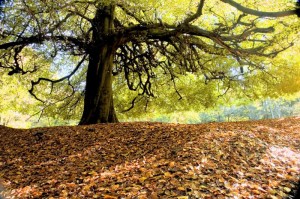
I love it when my schedule allows me to retreat for the day. Recently such an opportunity occurred and I found myself hanging out in one of my favourite, green spaces in London I love to escape to, Kew Gardens.
After treating to myself to a delicious lunch I wandered into a tree exhibition before deciding I’d had enough of walking the great stretch of land that makes up this huge green space and set myself down without much thought under the canopy of an enormous Cedar tree. I appreciate that Kew cherishes trees the way I and many others do and labels most of it’s tree stock with a small metal plaque with the trees name inscribed on it.
For the last twenty or so years I’ve developed a fascination for the stories, myths and legends about the trees we live and are surrounded by. So maybe it was not coincidence but more of an intuitive urge that drove me to sit and rest for a while under this particular tree. The last few months had been really busy and I was feeling emotionally and physically spent.
The Cedrus Atlantica towering above me was regarded as the world tree and in Greek mythology is home to the god of wisdom. Energetically the tree is associated with grounding and helping one to get rooted the very quality I was in desperate need of. And perhaps in that moment my own body wisdom knew what I needed and energetically what the tree would recharge me with.
The myths and legends and very often the spiritual and energetic associations of many of the trees you walk or drive past everyday may surprise you. Through my interest and research I have learnt so much about the way in which trees are not just botanical specimens that are both of necessity for the survival of the human race, but are some of our oldest living monuments as well as beautifiers of our environments. Just imagine for a moment a street without trees and you have a landscape that feels as if something significant is missing.
I grew up in a suburb of London (West Norwood) that was once covered by the great North Wood, a natural Oak forest that covered most of the area and raised ground starting four miles south of central London. The most common association with the Oak, one of the oldest and longest, living trees after the Yew tree, is the quality of ‘strength’. This is the tree whose trunk my back longs to lean against when I need to be replenished or to connect with my own source of courage.
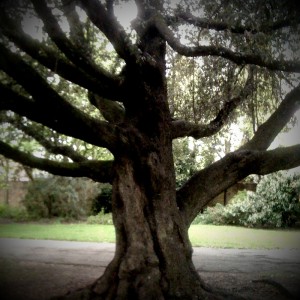
References to the Oak tree abound throughout the Bible and the Druids revered the Oak and honoured the sacred Oak grooves that once covered the land. Because of the deep roots of the Oak it is said to support with the well-being and healing of your feet. During one particular turbulent time in my life I sought out the daily company of a huge evergreen Oak tree in my local park. Her presence eased my pain and grief and watched over me as I nursed myself back to strength.
Most people will be familiar with the image of an overhanging Willow tree. The hanging, string like branches of the Willow tree is strongly associated with water and the flow of your emotions. Many Willow trees live on riverbanks and by water and hence it’s connection with tears and it’s ability to ease the pain of deep emotions. The Willow is considered as the poets muse because of the whisper like sound of its over-hanging leaves in the breeze.
Willow branches have a long cultural tradition of being used in funerals. Branches are placed in coffins and young plants, planted on graves. Across cultural traditions in Western Europe the Willow is regarded as a sacred tree. She is aligned with the moon and the tidal cycles. In North Western Europe the Willow was the tree wise women and healers turned to for it’s medicinal ability to ease rheumatism aggravated by damp conditions of the climate. And the Willow tree is considered to be the natural source of modern day aspirin.
I experience being in the company of trees as soothing and calming. I am comforted by the very existence of trees, one of the earth oldest living plant species. I love discovering new stories and legends about the trees we know and live with. If you want to learn more about the energetic characteristics of trees and how to be more closely connected with the trees in your neighbourhood there are plenty of great publications to turn to that make great summer reads.
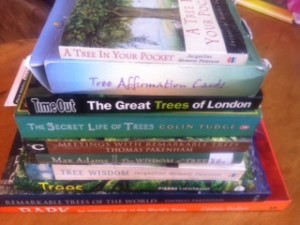
One of my all time favourite books is Tree Wisdom and A Tree In Your Pocket by Jacqueline Memory Paterson. Other tree books in my collection I’d recommend include:
- Meetings With Remarkable Trees and Remarkable Trees Of The World by Thomas Packenham
- Ancient Trees by Edward Parker & Amanda Lewington
- Bark: An Intimate Look At The World’s Trees by Cedric Pollet
- Trees: The Balance & Life Of Nature by Pierre Lieutaghi
- The Great Trees Of London by Time Out Magazine
- The Secret Life Of Trees by Colin Tudge
- Using The Wisdom Of Tree Oracle Card deck by Jane Struthers
- Tree Affirmation Cards by Victoria Sofia Lewis
- The Wisdom Of Trees by Max Adams
No Comments

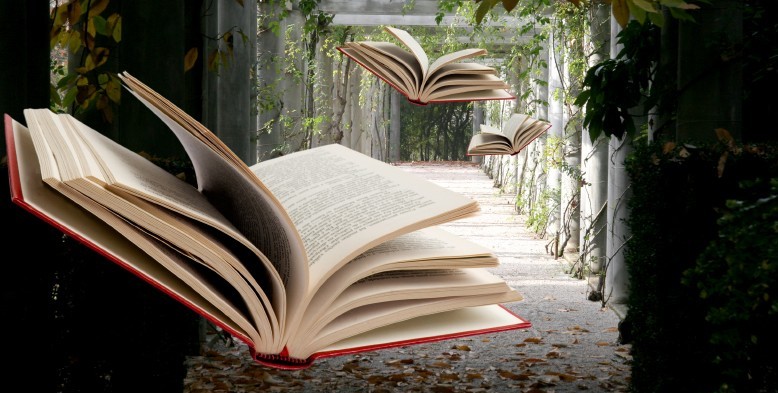


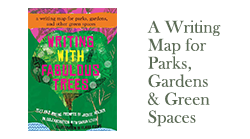

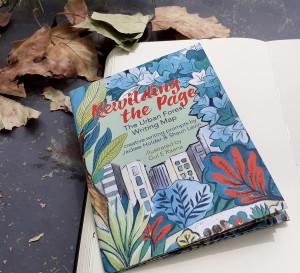

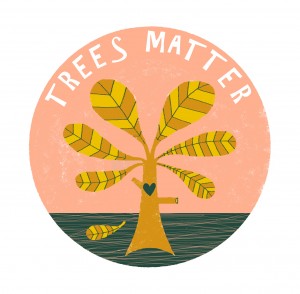


 It’s an illustrated collection of 12 Tree inspired writing prompts that explores the wisdom and lessons we can learn from trees as well as how tree wisdoms can provide insight and reflection on our own lives. In a handy pocket sized map that folds out the prompts also encourages a more intimate connection with the trees in your local neighbourhood, parks and green spaces through engagement with the writing prompts.
It’s an illustrated collection of 12 Tree inspired writing prompts that explores the wisdom and lessons we can learn from trees as well as how tree wisdoms can provide insight and reflection on our own lives. In a handy pocket sized map that folds out the prompts also encourages a more intimate connection with the trees in your local neighbourhood, parks and green spaces through engagement with the writing prompts.
 Trees have long inspired many poems, novels and short stories of writers in many ways. These creative writing prompts are devised to create a longer conversation about trees from your past and to stimulate you to indulge in a more reflective inquiry into how engaging and writing about trees can help you develop greater intimacy with yourself and your characters in sometimes surprising and unexpected ways. This writing map tucked into a pocket or a rucksack is the perfect companion on long walks in nature or whilst you are strolling through the city. You might be inspired to take a photo of a tree on your travels, slow down and experiment with drawing a tree to writing stories or personal narratives stimulated by the roots of your own family tree? The prompts and quotes generate learning and insight about yourself and where you come from as well as the opportunity to learn more about the host of benefits trees have to offer. Writing With Fabulous Trees will encourage you to be more observant about the trees in your neighbouring or surrounding parks and green spaces and even the trees in your street or in your own private garden will take on new and different meaning. Order Now £7.99 plus p&p
Trees have long inspired many poems, novels and short stories of writers in many ways. These creative writing prompts are devised to create a longer conversation about trees from your past and to stimulate you to indulge in a more reflective inquiry into how engaging and writing about trees can help you develop greater intimacy with yourself and your characters in sometimes surprising and unexpected ways. This writing map tucked into a pocket or a rucksack is the perfect companion on long walks in nature or whilst you are strolling through the city. You might be inspired to take a photo of a tree on your travels, slow down and experiment with drawing a tree to writing stories or personal narratives stimulated by the roots of your own family tree? The prompts and quotes generate learning and insight about yourself and where you come from as well as the opportunity to learn more about the host of benefits trees have to offer. Writing With Fabulous Trees will encourage you to be more observant about the trees in your neighbouring or surrounding parks and green spaces and even the trees in your street or in your own private garden will take on new and different meaning. Order Now £7.99 plus p&p











